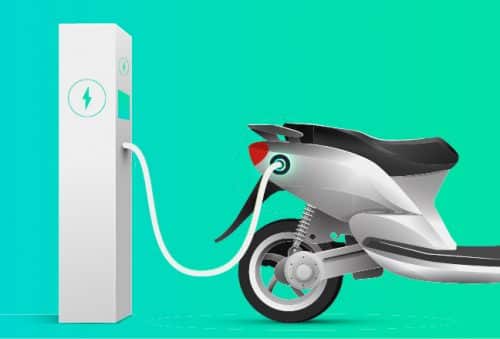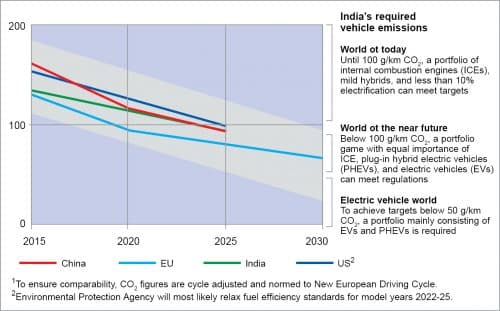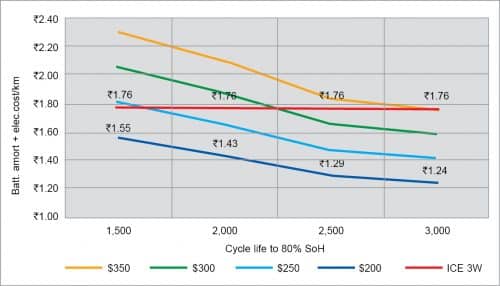Last-mile mobility is a solution that effortlessly fits into one’s lifestyle, and today’s electric last-mile solutions combine integrated deep data analytics, customisation, and sustainable engineering. In this article, some necessary aspects are discussed that are necessary for accelerating the adoption of electric mobility in India.

World is on the path of energy transition in mobility sector. The adoption of electric vehicles (EVs) is constantly rising. Since the past couple of years, we have been observing a shift towards electric mobility (eMobility). This shift towards EVs is primarily due to their ability to reduce pollution.
Data suggests that around 1.2 million people die prematurely in India due to outdoor air pollution, and road transport represents 25% share in air pollution, including greenhouse gases. The air pollution impacts our GDP by 3%. These figures are when we have approximately 30 million three- and four-wheeled fossil-fuel vehicles in India, and we can expect a lot more as the disposable incomes are increasing. India has only 22 cars per 1000 individuals, and the number will rise exponentially. Therefore, there is a need for a disruptive innovation and increase in the adoption of EVs.
The sale of EVs is growing year-to-year as government regulations try to reduce pollution by increasing the adoption of EVs. But why electric and not other fuels like CNG, LPG, fuel cells, ethanol, bio-diesel, etc? The reason is that combustion engines are highly inefficient as they run at only 20-25% efficiency in best-case scenario; electric drives operate at over 90% peak efficiency. Also, if the electricity is generated from renewable energy sources such as solar, wind, or hydro, there is zero emission.
Besides, the automotive industry is moving away from one-size-fits-all to more nimble, need-based and customisable product offerings. Different people have different requirements, and all want efficient solutions. Battery prices are coming down as well, making the financial equations tilt even further in favour of EVs.
One of the most important aspects that is fueling the growth of EVs is their simplicity. A typical combustion engine based car has about 1,700 moving parts. On the other hand, EVs have only 20 or less moving parts, which make them simple. We should focus on simplicity as long as it does not compromise performance or any usage scenarios.
Global context
The move towards electric mobility has already started globally. The sales of EVs have been accelerating at more than 40% year-to-year this decade, and EVs accounted for 2.6% of global vehicle sales in 2019. The number of public charging locations have doubled within two years to facilitate the increasing demand for EV charging infrastructure. Moreover, leading OEMs have announced EV portfolios up to 25% in their sales mix for the next decade. Volkswagen, BMW, and Daimler are prominent among them, indicating that the EV market is picking up.
Fueling this growth is the rapid decline in battery prices. High upfront price of batteries has been one of the major causes of high vehicle prices, which led to low penetration. Batteries are about 35-40% the cost of an EV, and the point when it becomes convenient and relevant for industries and consumers is when the prices are close to or less than $100/kWh.
As a result of this growth, all OEMs are doing some R&D activities related to electric mobility, as it is the only way to reduce emissions. The norms will also hit India and ensure that all automotive brands have some xEVs (hybrid or full electric vehicles) as a part of their portfolio.
But what does it take for disruption?
We are seeing early signs of adoption and a steady growth. But disruption is different. It refers to major changes occurring very rapidly. One example of disruption is that which has been brought about by mobile phones, making the PCOs redundant.
Disruptions happen often. We have seen the drastic change in mode of transportation brought about by Uber in just one decade, especially in major cities like New York. But what would it take to disrupt the market and accelerate the adoption of EVs in India?
Vehicle+Commuting for EV adoption
India has had EVs in the automotive industry for a very long time. The first EV hit the market back in 2001. But the adoption is still slow. This is because when someone buys a vehicle, it is not just the vehicle consumers look at for overall suitability. Parameters like predictability of the route, utilisation of the vehicle, price difference between a combustion engine vehicle and electric vehicle, emerging technologies being adopted by the OEMs, government policies, etc, all play an important tole.
When we classify different kinds of vehicles according to above parameters, we observe that the number one market that we are ready to serve is going to be of commercial vehicles, largely 3-wheelers and 2-wheelers. That is why last mile mobility is getting the kind of traction it is getting.
When we analyse from an energy parity perspective, regardless of electric or field based energy, we start seeing parity in battery prices around 200-250 dollars. EVs will find a lot of suitability if they have the right kind of life cycle. The moment that happens, ownership cost will reduce, ownership will become easy, and hence EVs will start getting adopted.
Trends suggest (see Fig. 1) that an explosion is going to happen in terms of 2- and 3-wheeler EVs in Indian markets by 2025.The push is in the right direction because the areas and the aspects which will help in EV adoption are the ones that we see all the time. Hence the disruption!

Emerging markets: A different reality
India and other emerging markets have a very different reality. When we design EVs for India, we have to keep the Indian realities in mind. We have densely populated roads with heterogeneous traffic and no uniformity in speed. Potholes and waterlogged roads are common in monsoon. Also, overloading is a common practice in commercial vehicles.
These are the realities of this geography. So, when we design EVs for mass adoption, we have to ensure that they are built to match the needs. There is no point in creating something that cannot compete with existing vehicles, both in terms of price and performance. Failure in either of these areas can slow down the adoption of EVs, because the technology should be such that apples can be compared to apples.
Perspective of driver/owner
There are various people whose livelihood depends on the performance of the vehicle, such as 3-wheeler and 4-wheeler drivers. They need a vehicle that is sturdy and lasts long. It is also important to ensure that the vehicle, once charged, can be driven whole day without any worry. A well-sized battery pack can provide operational assurance and reduce down time.
A commercial vehicle, in particular, should be able to carry heavy loads. And financing options are very critical, so we need to provide those tailored financing and leasing options that suit the consumers.
Driver behavior can significantly affect the operating expenditure and longevity of the battery. Batteries are the most expensive part in an EV, and unprofessional driving patterns can degrade the battery faster. Therefore, it is important to have the right kind of technology stacks in an EV, not just efficient drive trains. We need software that can constantly monitor battery dynamics and help in increasing efficiency. The API can be provided so that data can be extracted by the fleets or customers to ensure better driving behaviour.

Expected trends
EV penetration will occur primarily in commercial fleets with 2- and 3-wheelers, and small commercial 4-wheelers. Total cost of ownership and resale value are affected by energy efficiency and battery’s state of health, and both of these are dictated by driver’s behavior. Driver behavior can impact the vehicle range by 20% or more, and battery life by a similar percentage.
In future, fleet operations will need telematic platforms that offer integrated EV services. There is a scope for technology to improve battery-life prediction and real-time interventions to encourage good driving. The telematic platform is expected to monitor vehicle diagnostics, driver behaviour, battery usage, trip planning and scheduling, charging infrastructure planning, usage and scheduling, etc. All that is very important to ensure predictive support, so that downtime can be reduced.

While autonomous vehicles (AVs) are unlikely to emerge soon in the Indian market, AV technologies will find application in off-road cases as well as for energy efficiency and safety uses.
To cater to all these trends and requirements for adoption of EVs, innovative solutions are critical. Automotive OEMs and startups must make sure that they create solutions and designs that can compete in both price and performance with existing technologies.
The article is based on a presentation given by Dr Amitabh Saran, Founder & CEO, Altigreen Propulsion Labs, at MOVES 2021.







